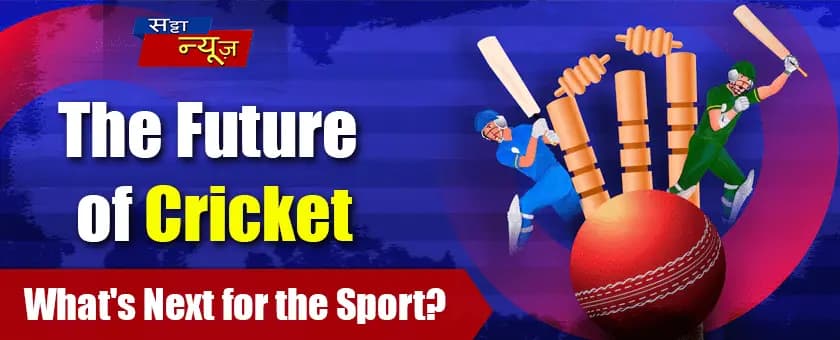Cricket, a sport with a rich history and a global fanbase, has seen numerous transformations since its inception. From the days of Test cricket to the advent of One Day Internationals (ODIs) and the revolution of Twenty20 (T20) cricket, the game has continuously evolved. As we look towards the future, several trends and innovations promise to shape cricket in exciting and unprecedented ways. This blog delves into the potential future developments in cricket, focusing on technological advancements, new formats, globalization, and the impact of climate change.
Technological Advancements
1. Enhanced Player Performance Analysis
The integration of advanced analytics and artificial intelligence (AI) is revolutionizing how teams analyze player performance. Wearable technology, such as smartwatches and biometric sensors, provide real-time data on players physical and mental states. This information allows coaches to make data-driven decisions, from optimizing training regimens to strategic in-game adjustments.
2. Improved Umpiring with Technology
The use of technology in umpiring has been a significant development in cricket. The Decision Review System (DRS) has already minimized human errors, but future advancements could make the system even more accurate. Innovations like UltraEdge, Snickometer, and Hawk-Eye are continually being refined. The possibility of fully automated umpiring, where AI makes instantaneous decisions on no-balls, run-outs, and boundary calls, could become a reality.
3. Enhanced Fan Experience
Virtual reality (VR) and augmented reality (AR) technologies are set to transform the fan experience. Imagine watching a live match from the comfort of your home but feeling like you are in the stadium. VR could offer immersive experiences, allowing fans to view the game from different perspectives. Additionally, AR could enhance live broadcasts with real-time stats, player profiles, and interactive features, making the viewing experience more engaging.
New Formats and Innovations
The Rise of T10 Cricket:The T20 format has been immensely popular, but the rise of T10 cricket is gaining momentum. T10, with matches lasting just 90 minutes, caters to the fast-paced lifestyle of modern audiences. Its brevity and excitement make it ideal for new fans and could be a key driver in expanding crickets reach globally.
Franchise-Based Leagues:The success of franchise-based leagues like the Indian Premier League (IPL), Big Bash League (BBL), and Caribbean Premier League (CPL) has shown that fans enjoy the mix of local and international talent. These leagues are likely to grow, with more countries establishing their own versions. The potential introduction of a global franchise league, featuring the best players from around the world, could become a major annual event.
Day/Night Test Matches:Day/night Test matches, played with a pink ball, have rejuvenated interest in the longest format of the game. These matches cater to prime-time audiences, making it easier for fans to watch after work or school. As the format gains popularity, more countries will adopt day/night Tests, potentially leading to innovations such as weekend-long Test matches designed for maximum viewership.
Globalization of Cricket
Expanding the Cricketing Nations: The International Cricket Council (ICC) is actively working to globalize the sport. Efforts to develop cricket in non-traditional regions, such as the United States, China, and parts of Europe, are underway. With initiatives to build infrastructure, provide coaching, and create competitive leagues, cricket could see a significant increase in the number of participating nations.
Inclusion in Global Sporting Events: Crickets inclusion in global sporting events like the Olympics could be a game-changer. The potential introduction of a T20 format in the Olympics would bring cricket to a global audience, increasing its visibility and attracting new fans. This move could also encourage countries with limited cricket infrastructure to invest in the sport.
Women is Cricket: The rise of women is cricket is one of the most promising developments for the sports future. Increased investment, better pay, and more media coverage are helping to elevate the womens game. Tournaments like the Womens Big Bash League (WBBL) and the Womens T20 Challenge are gaining traction. As the womens game grows, it will inspire a new generation of female cricketers and expand the sports global fanbase.
Impact of Climate Change
Adapting to Extreme Weather: Climate change poses significant challenges to cricket, particularly in regions prone to extreme weather. Rising temperatures and unpredictable rainfall can disrupt matches and endanger player health. To combat this, cricket boards may need to adopt new scheduling strategies, such as playing in cooler seasons or creating indoor cricket arenas.
Sustainability Initiatives: Cricket is taking steps towards sustainability. The use of eco-friendly materials for equipment and the implementation of green practices in stadiums are becoming more common. Organizations like the ICC and national cricket boards are emphasizing the importance of reducing the sports carbon footprint, which could lead to innovations in stadium design and operations.
Water Management: Cricket pitches require significant water for maintenance, a concern in water-scarce regions. Innovations in pitch technology, such as hybrid pitches that require less water, are being developed. Additionally, rainwater harvesting and recycling initiatives in stadiums can help mitigate water usage, ensuring that cricket remains viable even in areas facing water scarcity.

